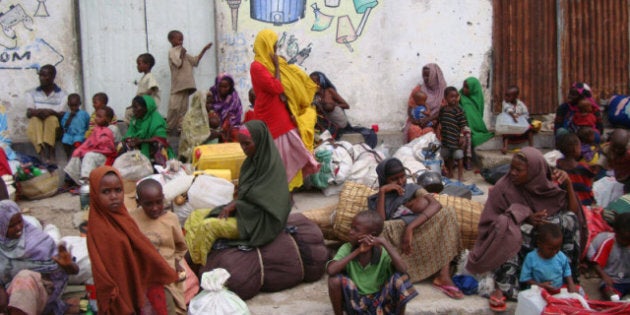
Calls and emails have flooded our house, with people inquiring how best to donate to the Somali famine relief effort. Aid effectiveness has become a growing buzzword among citizens in general, amid a growing confusion as to which organization can be best trusted with donations.

For Canadians, the time has perhaps arrived for a new model of effective disaster emergency relief and the part citizens and their government can play within it. Due to climate change, the number of natural disasters is growing steadily, as perhaps best shown in this chart in the Global Humanitarian Assistance Report 2009. The 2005 tsunami, the Haitian and Chinese earthquakes, Burmese and Pakistani flooding -- these have all appeared in just the last few years and don't take into account the more regional disasters occurring in various parts across the globe.
While Canadians remain remarkably generous with their funds in such circumstances, they are gradually shifting their confidence from government relief efforts to those of non-governmental organizations and even the private sector. But with the sheer number of such groups responding to humanitarian crises, it remains difficult to know who to support and how much of the money will actually get there. Within three days of the earthquake in Haiti, for instance, some 10,000 NGOs, many of them local, were already establishing themselves in that small nation and Canadian NGOs were appealing for donations across Canada. It was a confusing melee.
One thing we can count on is the generosity of the Canadian people. But at one point in the recent past this wasn't common knowledge. In 2004, Robert Greenhill, then president of the Canadian International Development Agency (CIDA), interviewed over 40 foreign policy experts from 19 countries and was somewhat surprised to discover widespread support for the idea of Canadians making a significant commitment to emergency humanitarian assistance. He learned that because Canadians had visceral and compassionate reactions to humanitarian disasters around the globe, the experts he was consulting felt this very strength of fibre in Canadian generosity should be amplified. They reasoned, rightly it appears, that disaster relief can potentially draw effectively on national, provincial, and municipal expertise in crisis management, but that its reach went ever farther to civil society groups, universities, private sector companies, and even the expat Canadian citizen communities from the particular countries in need. These observations bore themselves out, as with the generosity poured out by Canadians even as they endured the worst recession since the Depression of the 1930s.
The experts felt Canada should develop a more effective means of coordinating emergency fundraising and the distribution of these funds to those best able to make use of them in a particular crisis. This was already a recognized truth with the Canadian NGO community, but it was the concept of using the intense interest shown by the public in times of disaster relief as a means of "growing" interest that was groundbreaking within the Canadian context. No sooner had Greenhill finished his study than the 2005 tsunami struck with intense force. The delay, and sometimes-competitive nature of NGOs on the ground and fundraising in Canada, only enforced what the experts had been saying. The confusion surrounding the 2009 Haitian response proved it even further.
The present emergency crisis in East Africa has once again prompted Canadians to open their wallets and their hearts, yet confusion still remains as to whom to support. I have heard it said repeatedly in the last couple of weeks that donors worry that the larger NGOs build significant administrative costs into their programs (not always true), and that the smaller organizations might not have the clout to impact the region in distress (again, not always the case). This confusion and frustration, coupled with the complexities on the ground in Somalia, has prompted some to withhold their support -- a tragedy given the clear-cut need on the ground.
A better mechanism needs to be developed that is cooperative (all partners), transparent and effective before more Canadians lose the incentive to donate. It just so happens that an emerging group is forging a new way forward and perhaps showing the way for effective emergency relief for the increasing challenges that are sure to come. It will be the subject of the next post. Until then, don't let the confusion inhibit your generosity. Continue to give.